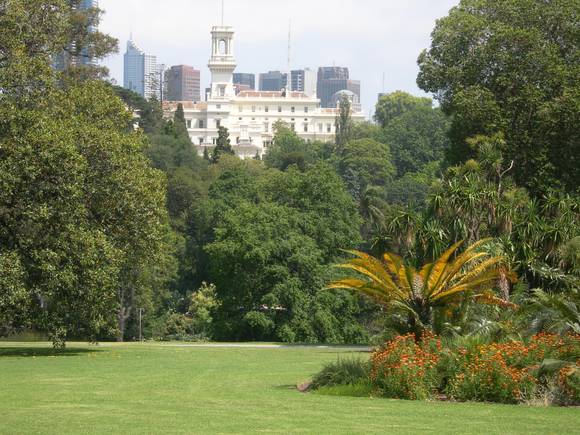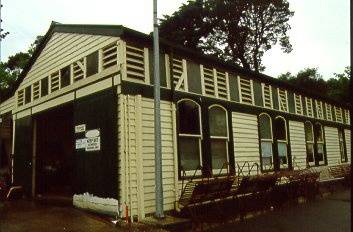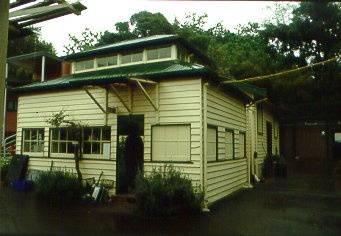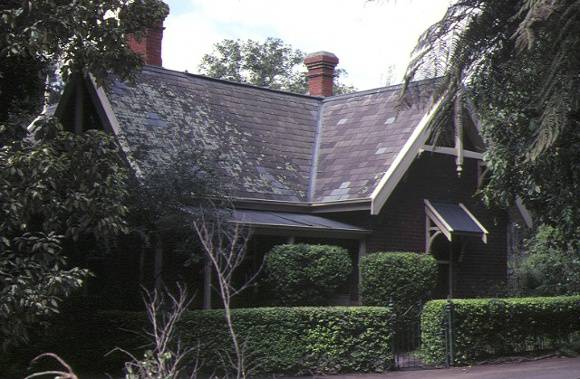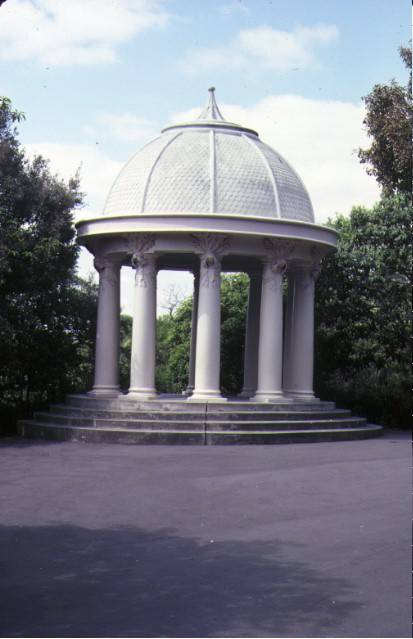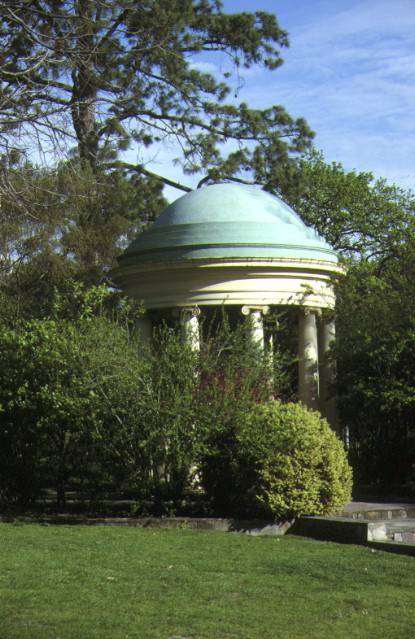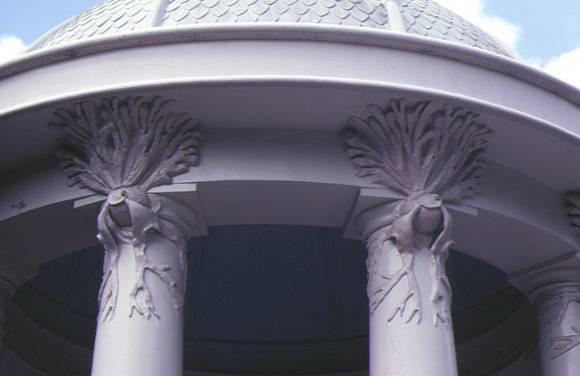| Back to search results » | Back to search page » |
|
ROYAL BOTANIC GARDENS
Statement of Significance
What is significant? From 1846 the Botanic Gardens were planted and landscaped under early curators, Arthur and Dallachy. In 1853 Ferdinand von Mueller was appointed government botanist and commenced the National Herbarium. In 1857 Mueller became Director of the Botanic Gardens and under his direction the Botanic Gardens embarked on a scientific program, introducing foreign plants from other parts of Australia and overseas. Many plants and animals were acclimatised for scientific research and education. The Botanic Gardens contained a systems garden, glasshouses, palm house, iron arbours, gates and fences, animal enclosures, and an aviary. Walks were formed with avenues of trees, beds and lawns planted, and the lagoon with islands was landscaped. An Under-gardener's cottage was erected in 1850, and the Director's residence in 1854. In 1873 William Guilfoyle was appointed Director of the Botanic Gardens and under his direction the landscape was redesigned in a more picturesque style; the straight paths were replaced by curved sweeping paths, avenues were removed, and the lawns were dotted with botanical collections in beds and specimen trees. The lakes and islands were further landscaped and altered in layout. Rustic bridges, rockeries, rotundas, pavilions, nursery buildings, and gate lodges were built. In 1901 the Temple of the Winds designed by Guilfoyle was erected as a memorial to La Trobe. The Nymphaea Lake was formed in 1903 and was the last major development by Guilfoyle before he retired in 1909. The layout, established by William Guilfoyle between 1873 and 1909, has been maintained by subsequent Directors. The rustic bridges have been replaced and a few pavilions removed and new buildings erected, but the landscape generally conforms to the Guilfoyle style. There is continual renewal of the planting as plants have to be removed and new plants and collections introduced. The Botanic Gardens still retain many old plants, including remnant vegetation, trees from the Arthur, Dallachy, Mueller and Guilfoyle period, and plants rare in the wild. There are many plants of outstanding size and aesthetic and botanical value. A new Herbarium was constructed in 1934 as a gift from Sir Macpherson Robertson to celebrate the centenary of European settlement in Victoria. This new development included the addition of extra land to the Gardens and the erection of new gates (F Gate), originally from the Carlton Gardens. The Herbarium was further enlarged in 1988. The glasshouses and a few gate lodges have been removed and replaced by modern buildings. The System?s Pavilion was removed and there have been numerous building changes in the Nursery. The Palm House which was relocated to the Royal Zoological Gardens is now in storage at Werribee Park. In 1964 the Nareeb Gates from a mansion in Toorak were relocated and are now at D Gate. A new herb garden was built in 1983 on the site of the former medicinal garden, and new plant collections have been established; including a grey garden, perennial border, grass garden, species roses, New Caledonia, California and Southern Chinese collections. In 1994 the William Tell Rest House burnt down and was replaced by a replica the following year. In 1999 a new path was formed between the Botanic Gardens and the Melbourne Observatory (Observatory Gate). How is it significant? Why is it significant? The Botanic Gardens contain some of Victoria's oldest cultivated and commemorative trees. There are also remnant plantings of Eucalyptus camaldulensis, E. melliodora, and Melaleuca ericifolia. Beneath a large River Red Gum, known as the Separation Tree, Governor Charles La Trobe and the public celebrated the separation from New South Wales in July 1851. The 1846 English Elm trees known as Arthur's Elms are amongst the oldest known exotic trees in Victoria, and the Gardens retain a few other trees from the 1850s and 1860s. On his appointment as Director, William Guilfoyle planted an Algerian Oak in 1873. The Royal Botanic Gardens are of aesthetic significance for the layout and planting established by William Guilfoyle between 1873 and 1909. It is an important nineteenth century landscape style that combines both picturesque and gardenesque landscape features, structures, botanical collections and the extensive use of subtropical species and bold foliage. The Botanic Gardens are of outstanding aesthetic significance incorporating a landscape of natural landforms, water, planting, buildings and structures. The layout is an outstanding response to the sloping site, and the landscape with sweeping paths, lawns, dense shrubberies, beds and specimen trees, internal and external vistas, and the location and design of buildings and structures impart a design of the highest quality. The Botanic Gardens are of outstanding beauty and the seasonal change, contrasting forms and foliage, and plant maturity form an attractive landscape. Key elements in the design is the use of water, landscaped islands, sloping green lawns, curved paths, triangular beds, rockeries, specimen trees, the mounds and a reservoir shaped as a volcano. The planting themes include an oak lawn, fern gully, palm collection, cactus garden, Australian border, Queensland collection, New Zealand beds and South African triangle. There are significant views to the Government House tower, Temple of the Winds and Director's residence. Within the Botanic Gardens are several buildings and structures of historic and architectural significance. These include the 1850 Under-gardener's Cottage (now Craft Cottage), the oldest building in a public garden in Victoria; the 1854 Director's residence (now Gardens House) and home to Garden Directors until 1991; 1901 Temple of the Winds designed by Guilfoyle in a classical style incorporating staghorn fern capitals; an unusual masonry Directors' roll; and a significant collection of pavilions, gate lodges, arbours, seats, rockeries, gates and fences, and nursery buildings. In the Nursery is a rare example of a prefabricated iron house manufactured by Walmsley of London, and a paint shop with a roof lantern in a picturesque style. The Royal Botanic Gardens and National Herbarium are of scientific significance as the centre of botanic research, plant acclimatization and species introduction into Victoria since its establishment in 1846. The living collections form the most extensive collection of plants in Victoria and are a depository for extinct, rare and threatened exotic, Australian and Victorian species. The Botanic Gardens contain several significant thematic plantings incorporating geographic, horticultural, and ecological collections. The Camellia collection is listed as the Australian National Reference Collection and the Viburnum collection is registered by the Ornamental Plant Conservation Association of Australia, and both are important reference collections. The Royal Botanic Gardens are of social significance for the valuable recreational and educational role they provide to visitors. They are one of the State's major tourist attractions and include many international and interstate visitors of all ages. The Botanic Gardens play a major role in environmental, botanical, horticultural and aboriginal history education in Victoria. They have been a venue for major public events, including theatrical and musical performances, and official celebrations throughout their history.
The Royal Botanic Gardens, commenced in 1846 on the south side of the Yarra River on a site selected by Superintendent Charles La Trobe, are located adjacent to Government House, Melbourne Observatory and the Domain. In March 1846 John Arthur was appointed the first superintendent, and later an area of 2ha (5ac) was fenced and developed near Anderson Street and the Yarra River. The Botanic Gardens were later enlarged in 1875 to include additional land from the Domain. The Botanic Gardens reserve is now 36ha.
The Royal Royal Botanic Gardens Melbourne are of historical, architectural, scientific, aesthetic, and social significance to the State of Victoria.
The Royal Botanic Gardens are of historical significance as Victoria's earliest botanic garden. The site was instrumental in the introduction and acclimatisation of plants, and animals, in Victoria. The involvement of Mueller and Guilfoyle, and the earlier curators Arthur and Dallachy, established the Botanic Gardens as the State's principal botanical resource and as the centre for botanical research in Victoria. The association of Ferdinand von Mueller, a botanist of international importance, as Government Botanist (1853-96) and Director of the Botanic Gardens (1857-73) and the founder of the National Herbarium is significant. Mueller was instrumental in supporting the establishment of regional Botanic Gardens and parks by providing many plants and advice, resulting in an exceptional collection of nineteenth century Botanic Gardens and plants in Victoria. Guilfoyle was involved in the redesign of a number of these Botanic Gardens, and several private gardens, and are all regarded to be outstanding examples of his landscape style.
Group
Parks, Gardens and Trees
Category
Gate


